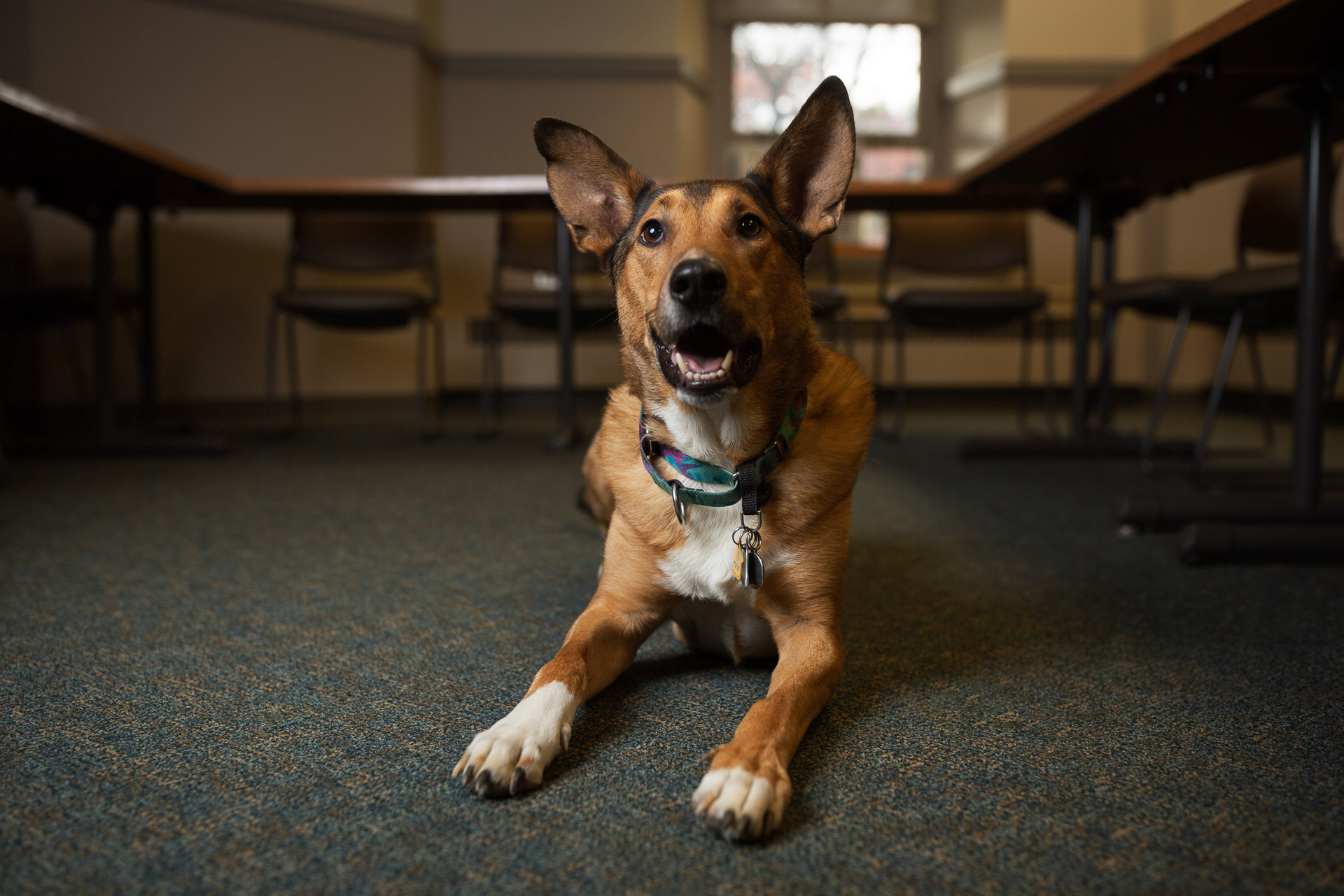In Lafayette's First-Year Seminars, students explore issues, gather evidence, and communicate their ideas through writing. Here's a look at one of these innovative classes, 'The Dog Course.'
By Kathleen Parrish

Seven-year-old Arlo is one of Bianca Falbo’s three dogs. He is a frequent guest in the classroom. “Arlo loves meeting students and chasing squirrels on the Quad,” Falbo says. “For the past few years, Arlo and I have been training in the sport of canine nose work, which is similar to scent detection work where dogs learn to trace an odor to its source.”
What’s it about? Humans’ complicated relationship with dogs. While they may be good for us—some scientists believe without them we never would have evolved from hunter-gatherers to an agrarian lifestyle—we’ve not always been good for them. This First-Year Seminar explores human-animal relationships and the moral consideration owed to other animals.
Who’s teaching it? Bianca Falbo, associate professor of English and certified dog trainer, developed an interest in animals at a young age. “Growing up, I had lots of animal companions—my parents never seemed to mind if I brought home one more,” she says. Falbo also teaches the writing seminar “Representing Animals” and advises student members of the Dog House, who raise puppies for a local service dog organization.
Good dog! Researchers have found connections between dog ownership and healthier living: If walking your dog every day gets you out of the house and moving, then owning one is a boon for the heart. Caring for one also can breed empathy for animals as well as humans. There’s also interesting research about how interacting with our canines can produce a mutual surge of oxytocin, the same hormone that helps mothers and infants bond.
Bad dog? Sometimes we have expectations based on cultural texts about who dogs are and how they should be. Case in point is Lassie, a fictional literary and TV character made famous for her loyalty, bravery, and intuitive understanding of human nature. Living with dogs, however, is often a different story. Dogs need to learn skills for life with humans—don’t jump on people, don’t eat from the counters, don’t pee on the rug.
… Or bad human? They don’t know unless we train them. The popularity of “dog shaming” memes is a good example of how we blame dogs for our unrealistic expectations. Although intended in good fun, many of the images of “bad” behavior are just dogs being dogs—or dogs in need of better human supervision or management.
What do we get wrong? Thinking that humans must be the “alpha” or the “pack leader.” That way of thinking comes from studies of captive wolves who, because they were in an unnatural situation, exhibited a dominance hierarchy that was not in fact characteristic of wolves in their natural habitat. Even though that view of wolves is outdated, you will still find dog-training advice based on it. And that advice typically recommends rather harsh treatment and punishment.
Becoming companions: Dogs were the first domesticated animals, emerging anywhere from 12,000 to 100,000 years ago. Dogs and wolves descended from a common ancestor and share 99.96 percent of their DNA. So it’s not always obvious from archeological evidence what’s a dog or what’s a wolf. Raymond Coppinger, a biology professor at Hampshire College, hypothesized that a common ancestor of present-day dogs and wolves was attracted to garbage piles that accumulated outside compounds of early humans. Animals who could tolerate closer proximity to humans stayed and reproduced. What is important about his theory is the idea that tameness is genetic—nature over nurture. In that regard, you could say dogs chose us.
